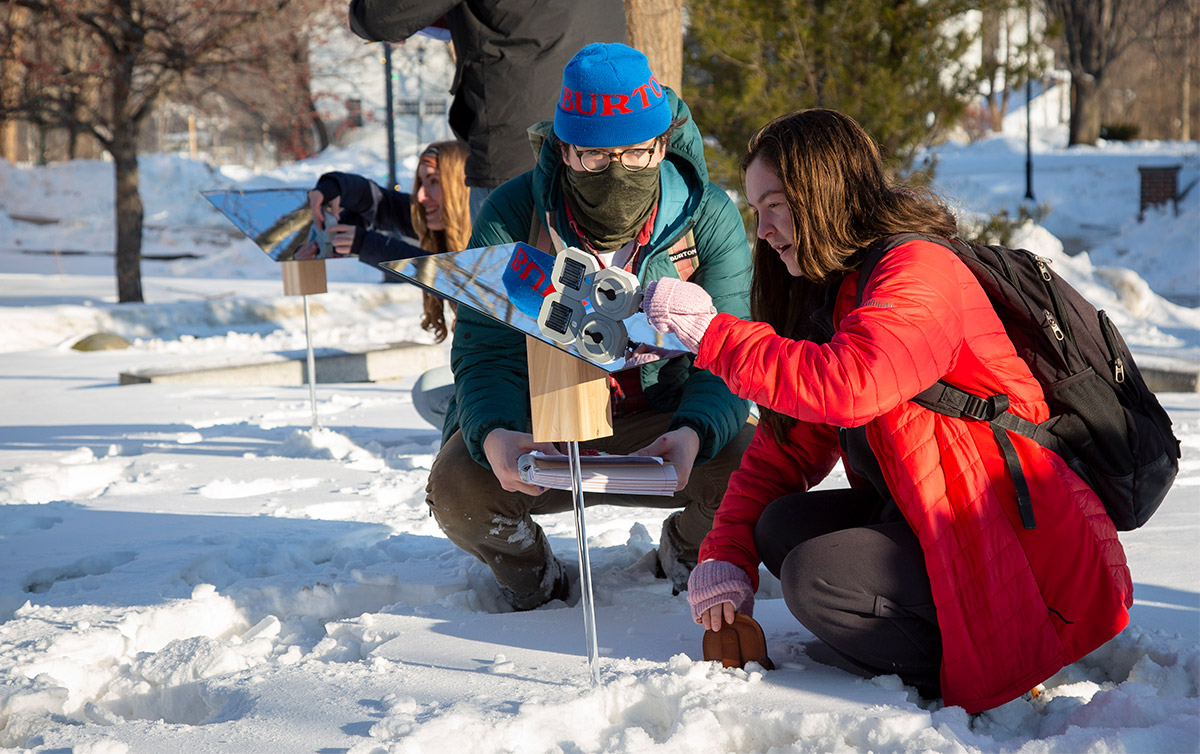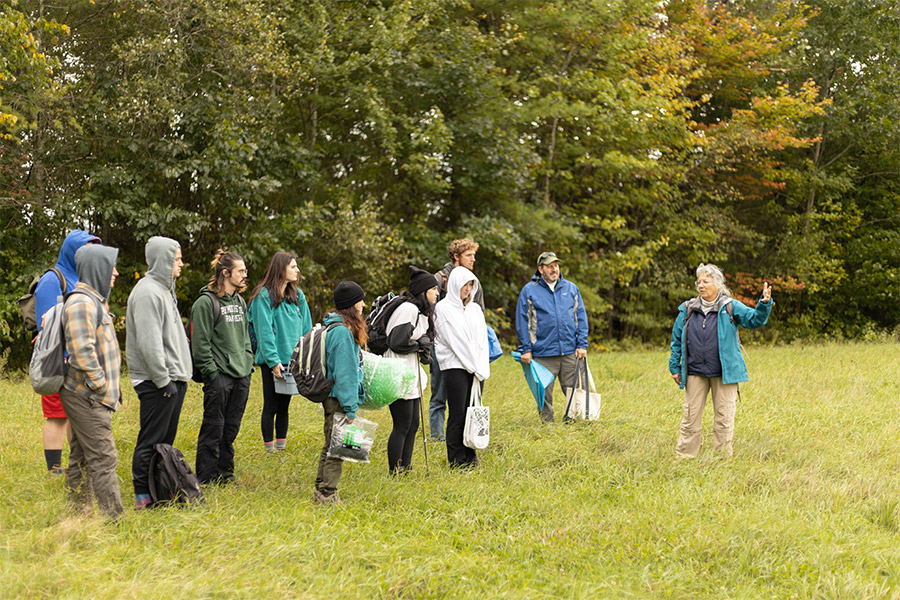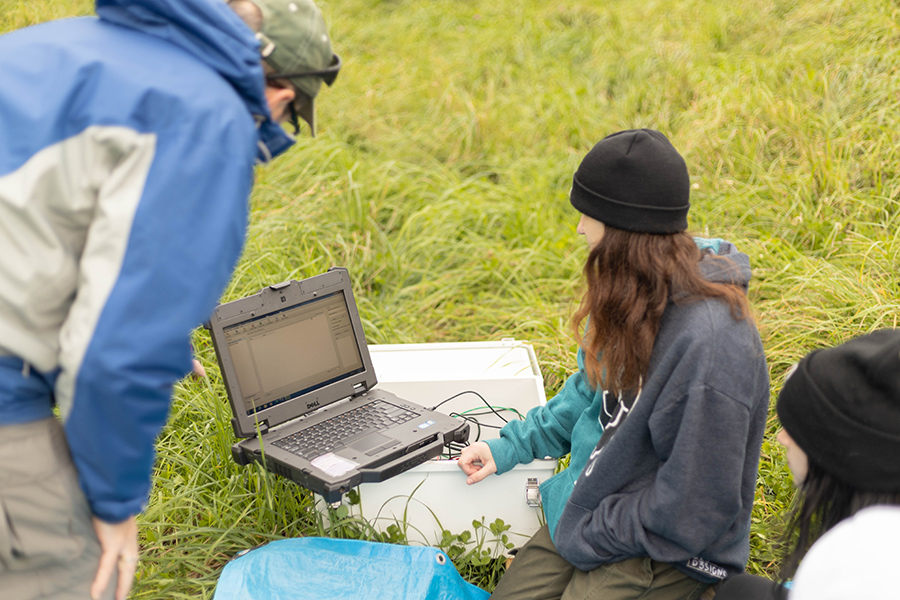Higher Education Re-envisioned
MEERCAP (Mirror Exploration, Experimentation and Reflection in Climate Adaptation Planning) seeks to discover whether arrays of mirrors can deflect the sun’s rays enough to create a measurable environmental change that can be detected with sensors.
“We hope it will be a resource for education about the role of sunlight, reflection, and human decisions regarding climate change action,” says Professor Lisa Doner of the University’s Environmental Science and Policy Program and Center for the Environment. Doner is spearheading the project, which also involves PSU colleagues and students.
The mirrors, each two-by-two feet, are all at the same height and face in the same direction. “The idea is to try to determine how many mirrors it would take to cool the ground enough to make a difference locally,” Doner says.

The project capitalizes on the work of Dr. Ye Tao, a former fellow at Harvard’s Rowland Institute, and the data collected from it will be open so that members of the public can see results as they are collected. A website showing data is expected to be online soon, and the array sites will be open for public viewing and school field trips. Partnerships with several high schools are in the works, and curriculum modules and demonstration kits for hands-on use by students in grades 9 through 16 are available.
The project wins kudos from Cole Prescott ’24, a climate studies major who worked on it for two summers. “I like the idea of reflecting the sunlight back into the sky because I think it could be a solution to climate change,” he says. “It’s really neat how this could actually have started at a school as small as Plymouth State.”
William Van De Veen ’22, an environmental science major, also worked at the Plymouth site over this summer. Those he has told about the project—even climate change skeptics like his grandfather—like the idea of it “because it’s practical,” he says.
—Cole Prescott ’24, climate studies major
The multidisciplinary initiative has secondary objectives as well. Jessica Morgan, a PSU teaching lecturer in chemistry, has been working with Dr. Tao to determine the feasibility of using mirrors to heat oyster shells to produce calcium oxide, which could be used as a home heat source and to help reduce ocean acidification. PSU students have also been testing the growth habits of plants under shade conditions versus direct sun at the site.
The project has drawn participation from PSU’s Morgan; Eric G. Hoffman, a professor of meteorology; Sarah Tuttle, a teaching lecturer in environmental sciences and policy and biological sciences; and Robin DeRosa, director of the Open Learning and Teaching Collaborative. A key collaborator is Tracey Lessor, a chemistry professor at NHTI.
“We have just started a climate studies degree here, so quite a number of us are interested in long-term climate change and looking at it from an atmospheric science point of view,” says Hoffman. “It helps to have a multidisciplinary group of people doing this.”


Morgan agrees, saying, “If it’s as simple as putting mirrors up, everyone could put up a few—at your apartment building in the city, or in the backyard.” With news about the environment “getting worse daily,” she says, “any small part I can play, I just feel better.”
Funding for the project has amounted to just over $100,000, with $45,000 from a University System of New Hampshire Open Education grant, plus grants from the National Science Foundation.
Initial data coming from the sensors is promising, but participants caution the project is not a permanent answer to climate change. It is a placeholder action as scientists work toward longer-term solutions.
“The mirrors are there to buy us time,” Doner says. ■ Kathie Ragsdale
